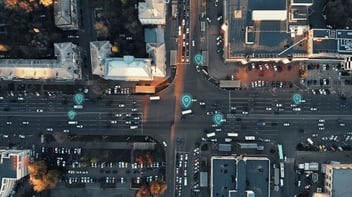

The 5 biggest challenges facing Remote Patient Monitoring
Remote patient monitoring (RPM) has the potential to transform patient care completely. If implemented widely, it will revolutionise the patient experience and enable healthcare services to manage their resources much more effectively than they are able to now by alleviating the pressure of healthcare systems around the world.
The adoption of RPM will not be without its challenges, though. This article will take a look at some of the biggest barriers to entry for RPM technology that are yet to be overcome.
Data Security
For the data transmitted over any RPM platform to be secure enough to meet the standards required of healthcare, it will need robust data management practices, clear boundaries of ownership and ironclad security protocols.
Large sections of the data management process could be handled by third parties, which creates risk for patients potentially having their data stolen. The challenges are no less acute for hospitals, who risk integrating a third-party system that could be hacked, putting their patient’s safety and privacy at risk.
Data Accuracy
Arguably the most complex challenge facing RPM adoption concerns data accuracy. A lot of this comes down to perceptions, both among patients and medical staff.
Can we really expect patients more accustomed to traditional healthcare methods to trust that a small device will provide more accurate data about their health than what they could provide to their doctor themselves?
Frontline medical professionals will be expected to diagnose and treat patients on the strength of the data provided. They, too, need to trust that it is of the highest possible accuracy if they are to take the kind of swift and decisive action needed - particularly in the treatment of chronic and potentially fatal conditions.
Another thing to consider here is the sheer amount of patient data that could be collected and presented to doctors and nurses. This has the potential to be overwhelming.
How successfully they are able to quickly assess which data points are most relevant will depend on how much data is presented, as well as the format in which it is presented. This makes the margin for error and the accuracy of decisions made on the basis of this data very hard to predict.
Real-time Access to Data
The transfer of information required for RPM to work is potentially a long and complicated process and consists of multiple transfers.
Firstly, data must be collected and uploaded from the patient’s device. If this device is on a mobile network, the data must then travel through that network provider’s infrastructure and out onto the internet before ending up in the service provider's network, probably via multiple data centres and the RPM platform network.
If any of these hops is interrupted, or an outage occurs at any of the stops on this journey, the data might be delayed in getting to its destination.
Mobile networks are not guaranteed to be always available. This is seen as a big enough problem in cases where mobile users cannot access Instagram for an hour or two, but when it is genuinely a matter of life and death, as it could be for a patient, it is critical that data is delivered reliably and in a timely manner.
Systems Integration
If it were the case that all healthcare providers around the world used exactly the same systems on the same network, then systems integration would not be so much of an issue. Unfortunately, that couldn’t be further from the truth.
For example, in the UK, the healthcare sector tends to use outdated software stacks and a labyrinth of different systems for different things.
Introducing a remote monitoring platform to the mix would, therefore, have to be managed extremely carefully to avoid corrupting existing patient records and ensure that any future systems migrations would not interfere with the RPM platform.
Cost of Devices
To try and reduce the risk around security and make integration simpler, hospitals could choose to provision RPM devices themselves rather than collect data via an app or third-party device.
A review conducted in the US in 2016 came up with a range of costs for rolling out RPM. Across 13 separate studies, the “combined intervention cost” (the total cost of the device, plus servicing and monitoring) was between $275 and $7,963 per patient. That’s roughly anything from £200 to £6,000. Again, that’s per patient. For struggling institutions like the NHS this kind of cost is simply not possible as a nationwide solution.
Conclusion
Though the future of RPM poses a number of exciting opportunities, more transparency and detail around costs are needed before its value can be accurately measured. What’s more, until some ROI can be evidenced against the high roll-out costs, it remains to be seen whether RPM will be able to be rolled out widely enough to realise its potential to revolutionise patient care.
Speak to a Velos IoT expert
Related articles


What Are The Differences Between LoRaWAN And NB-IoT?
When deploying and maintaining an IoT fleet, one of the most important decisions you'll make is...

LTE-M vs NB-IoT: What are the differences?
When it comes to LPWAN options for IoT businesses, two LPWAN technologies stand out: LTE-Mand...